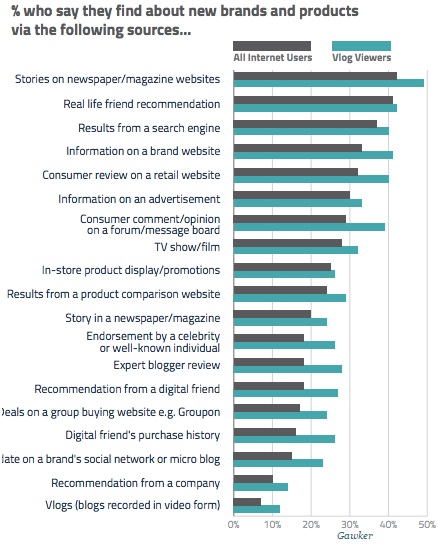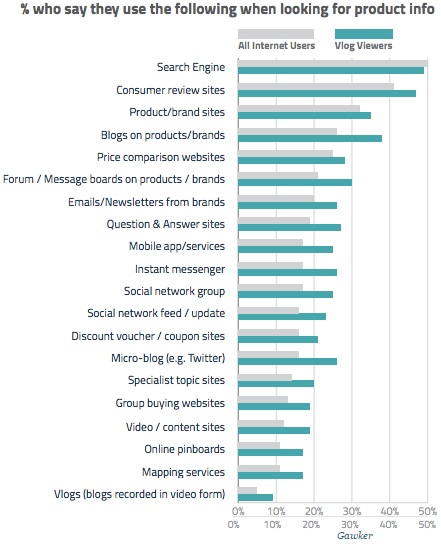Children and teenagers are now more likely to know YouTube vloggers than film stars, but a new survey suggests their influence on spending habits isn’t as influential as brands and traditional media companies think.
The new study from GlobalWebIndex is based on its ongoing survey of more than 170,000 internet users.
The survey data suggests that fans of vloggers like Zoella, Alfie Deyes and Tyler Oakley look to them more for entertainment and life advice than to find out about new products and brands.
From their findings, the researchers even dismiss the idea that vlog viewers are all teenagers.
They found that while 47% of people aged 16-24 said they had watched a vlog in the previous month, this figure increased to 50% for people aged 25-34.
The study also found that only 12% of survey respondents who watch vlogs said they were influenced by a vlogger’s suggestion.
The role of sponsorship among the YouTube producer community remains contentious, with many calling for transparency in making viewers aware vloggers are being paid to promote a product.

According to GWI, 42% of internet users say they have watched a vlog within the last month, although this rises to 50% for 16-24 year-olds and 25-34 year-olds. The vast majority of vlog viewers – 93% – are watching them on YouTube.
On the other hand, more than 40% had discovered new brands through stories on newspaper or magazine sites or from a friend’s recommendation, according to the survey of almost 42,000 people in 32 countries.
When people are actively searching for products, vlogs rank even lower: 5% of internet users and less than 10% of vlog watchers use them for research, turning to, surprise surprise, search engines and review sites instead.
“It’s clear that vlogging is still heavily associated with entertainment, comedy and advice – rather than a space for overtly commercial activities,” GWI’s head of trends Jason Mander said. “Incorporating the latter in a way that seems acceptable to the vlogging audience will be crucial.”

On the other hand, the survey doesn’t take into account the more subtle effects of product placement. For example, someone may have read about that mascara already, but a vlogger’s recommendation could give them the nudge they need to go out and buy it.
In addition, the youngest people in the study were 16 – it could be that vloggers’ army of tween and young teen fans are far more susceptible to their brand recommendations.
